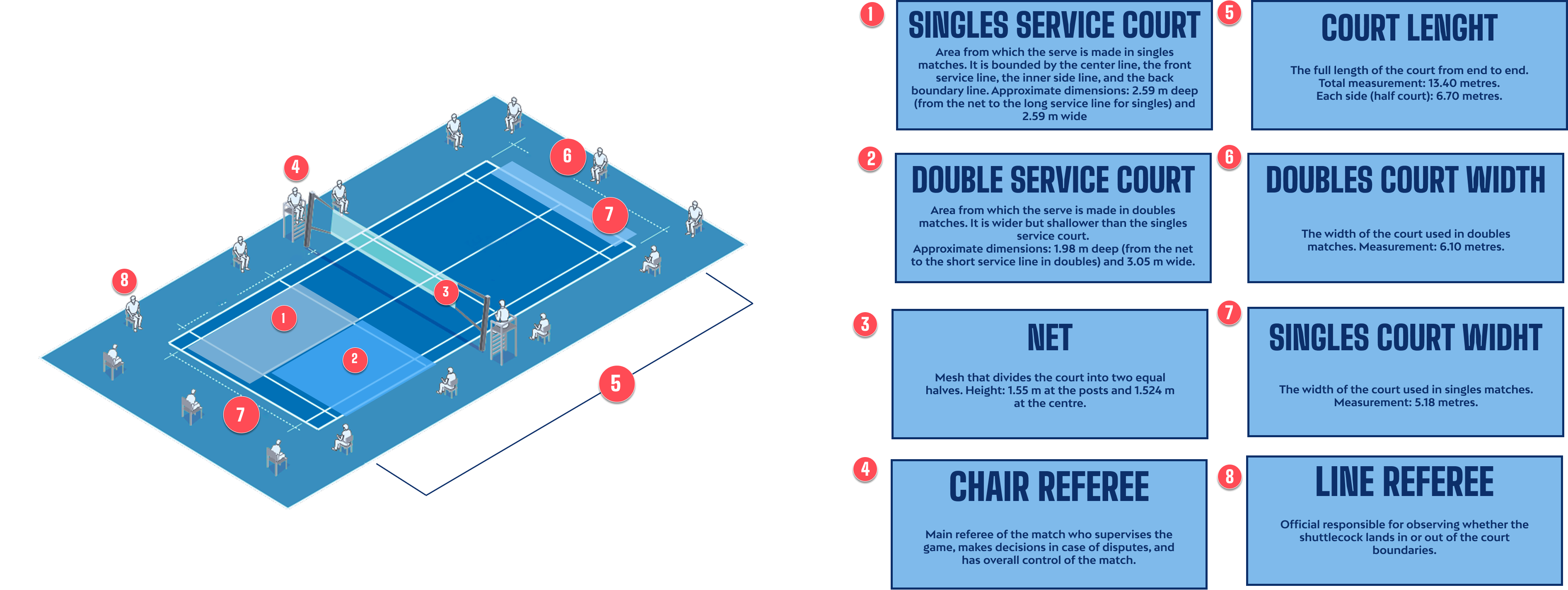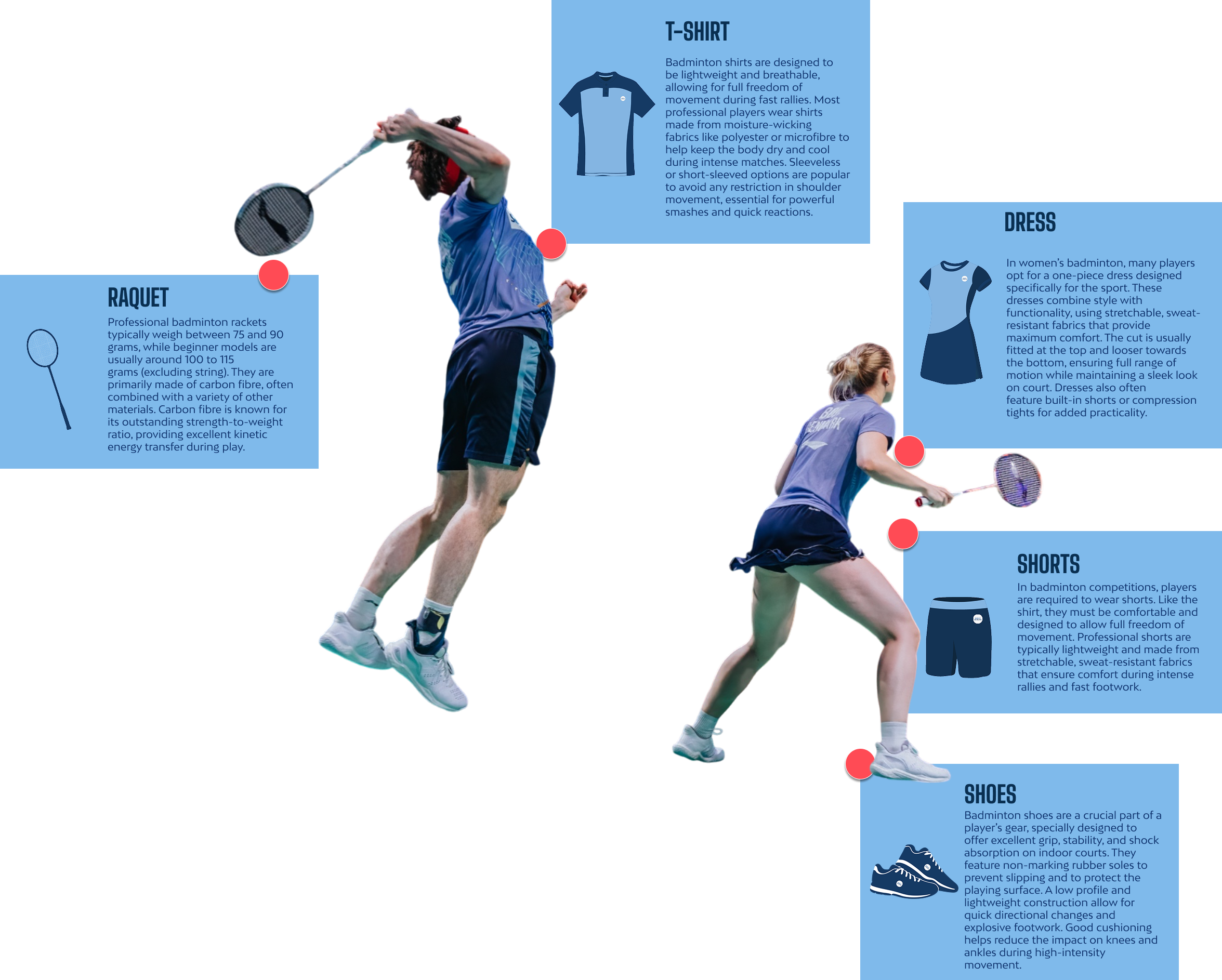Badminton is a fast-paced and demanding sport played with a lightweight racket and a shuttlecock (also known as a birdie). It takes place on a rectangular court divided by a net, and features five official disciplines: men’s singles, women’s singles, men’s doubles, women’s doubles, and mixed doubles. With its combination of speed, technique, and strategy, badminton stands out as one of the most thrilling racket sports in the world.
Matches are played in a best-of-three games format, with each game played to 21 points. A player or pair must win by at least two points, unless the score reaches 29–29, in which case the first to reach 30 points wins the game. Points are scored on every rally (a system known as rally scoring), making every shot count and keeping the pace of the game consistently high.
To win a point in badminton, a player or pair must make the shuttlecock land inside the opponent’s court or force the opponent to hit it out or into the net. Points are awarded on every rally, regardless of who served – this is called rally scoring.

